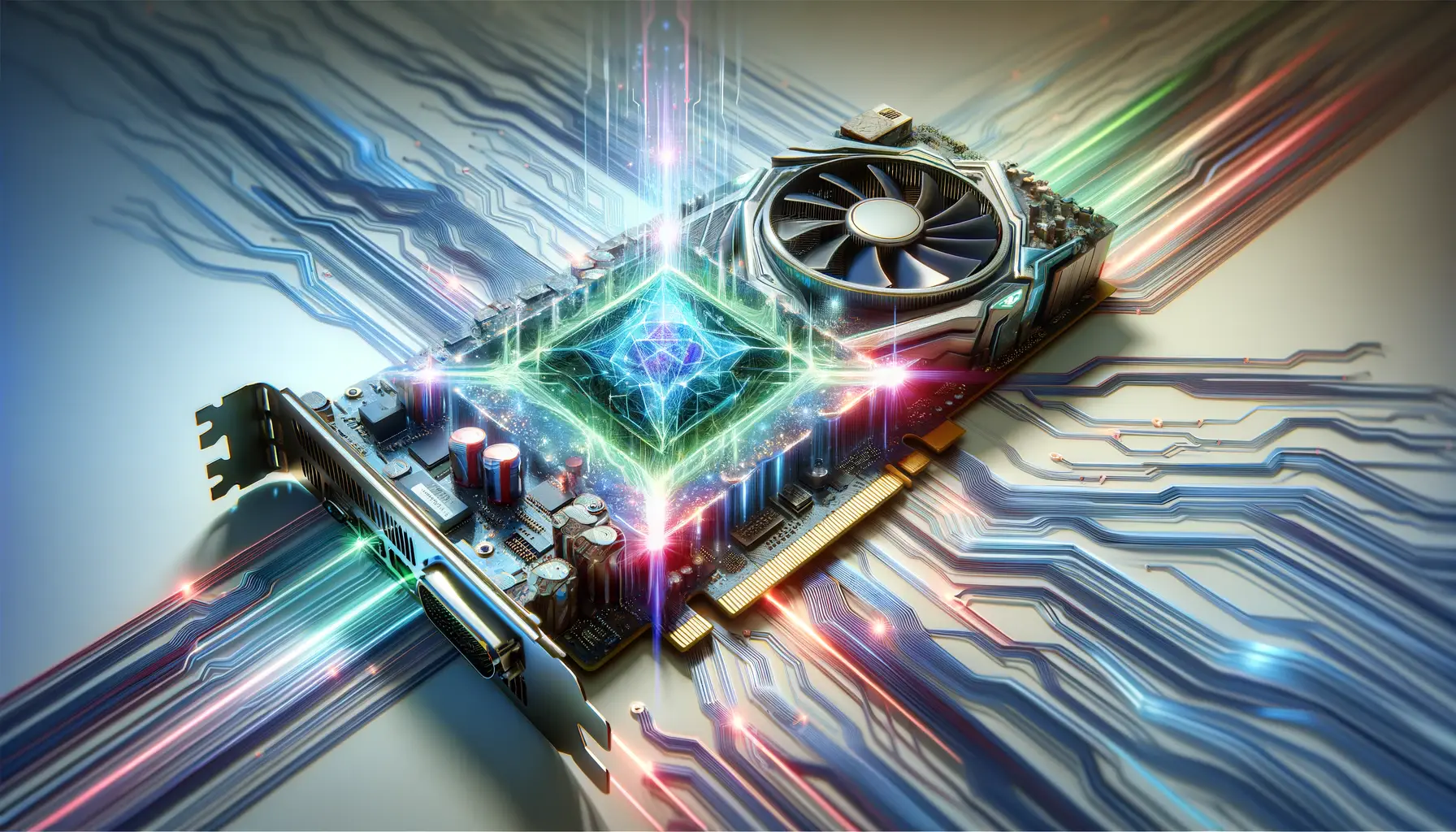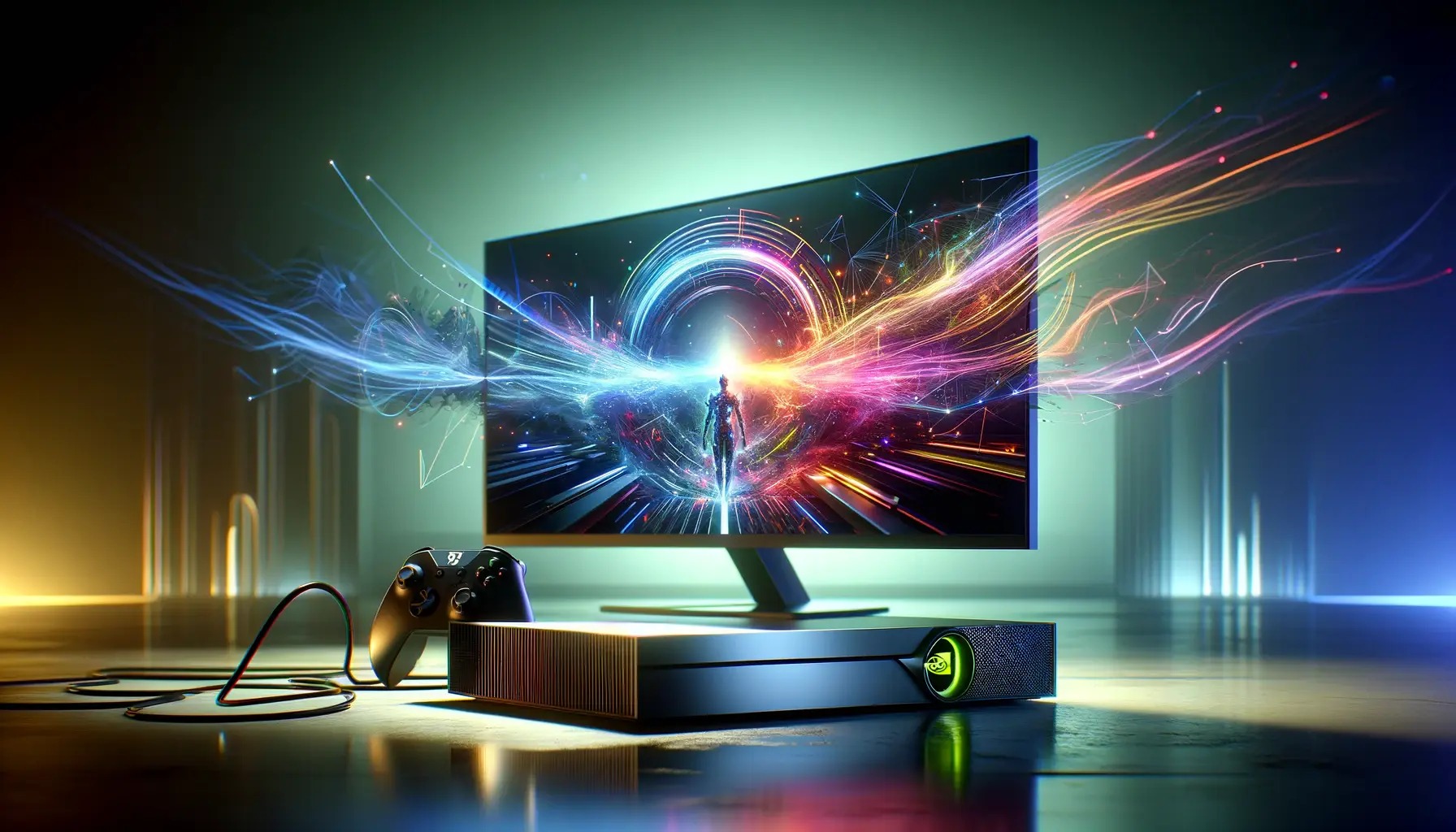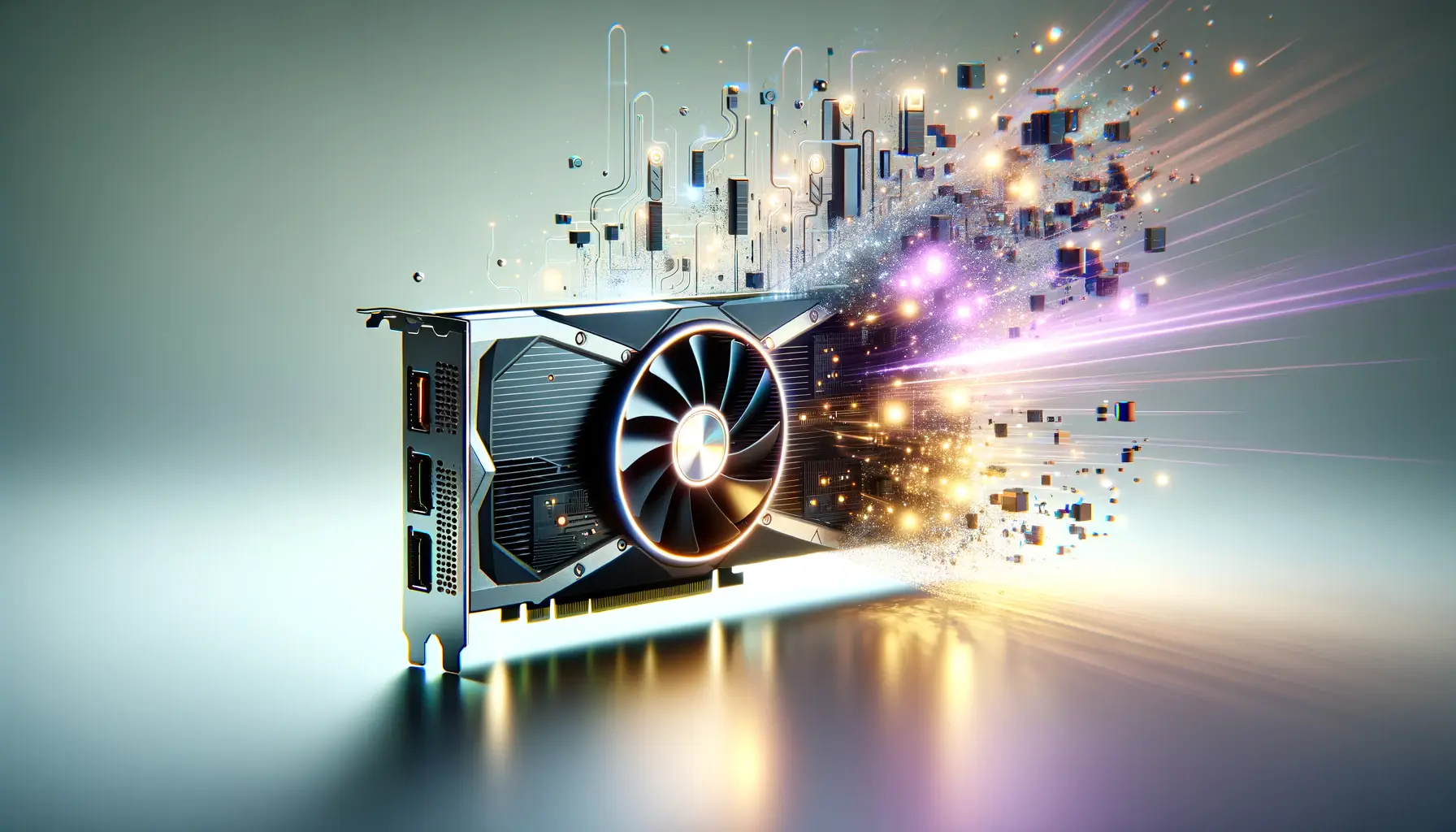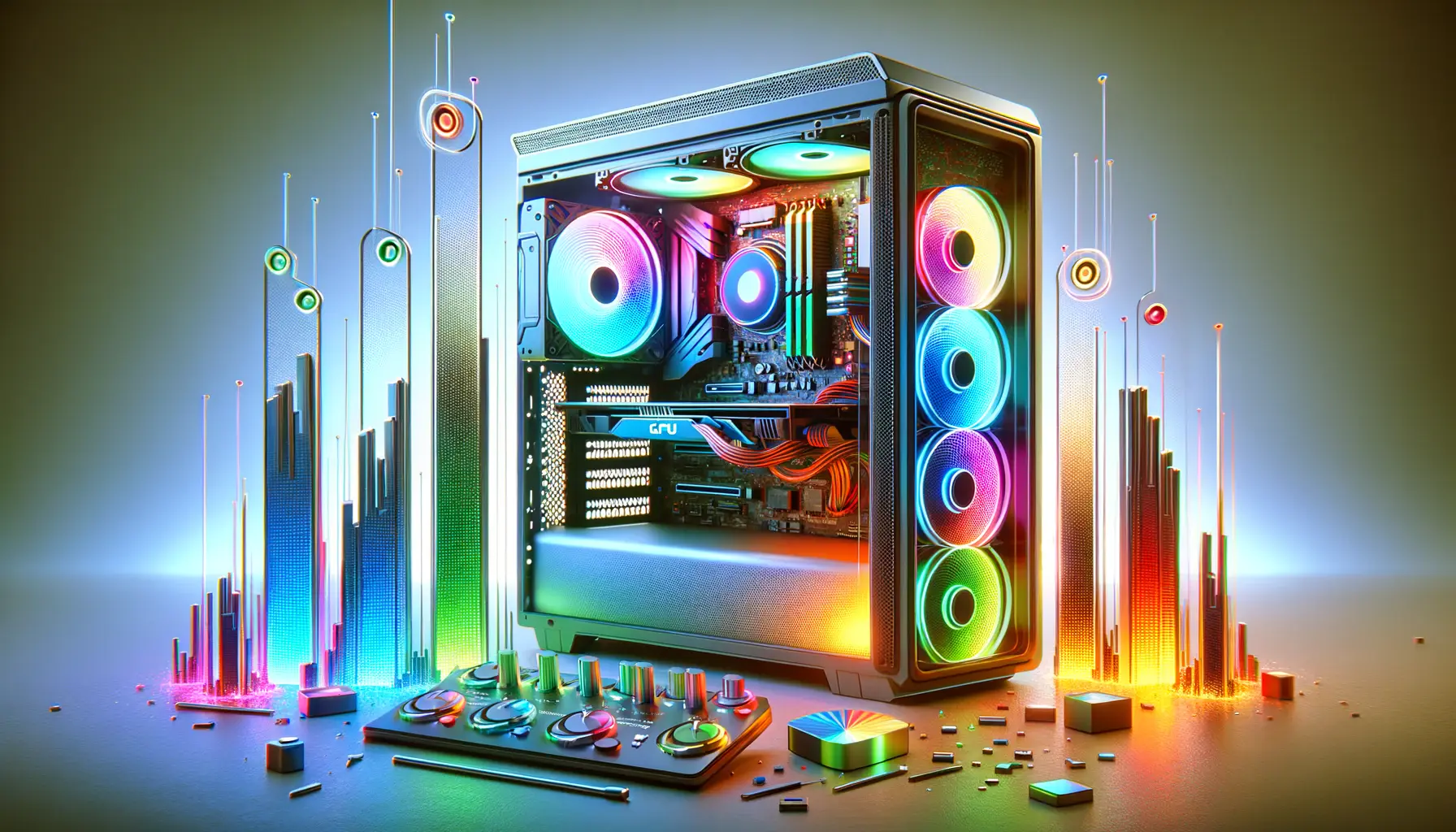The realm of gaming and graphics technology is witnessing a revolutionary phase with the advent of NVIDIA’s DLSS 3, marking a significant leap towards the future of artificial intelligence in rendering.
This innovative technology, standing for Deep Learning Super Sampling, has not only captivated the interest of gamers and developers alike but also set a new benchmark in the efficiency and quality of real-time graphics rendering.
The core of DLSS 3 lies in its ability to harness the power of AI, transforming the gaming experience by offering unprecedented frame rates, enhanced image quality, and reduced latency.
At the heart of DLSS 3’s breakthrough lies its sophisticated AI algorithms, which intelligently upscale lower-resolution images to higher resolutions without compromising on detail or quality.
This process, fundamentally different from traditional upscaling methods, leverages deep learning to predict and generate high-fidelity graphics.
The result is a smoother, more immersive gaming experience that was once thought to be beyond the reach of current hardware capabilities.
As we delve deeper into the components and workings of DLSS 3, it becomes evident that NVIDIA is not just reshaping the landscape of gaming graphics but also paving the way for future developments in AI-driven technologies.
- The Evolution of DLSS Technology
- DLSS 3’s AI-Driven Mechanisms
- Real-World Applications and Benefits
- Challenges and Considerations
- Comparative Analysis with Other Technologies
- Future Prospects of DLSS and AI in Gaming
- Enhancing User Experience with DLSS 3
- Embracing the Future with DLSS 3
- DLSS 3: Frequently Asked Questions
The Evolution of DLSS Technology
From DLSS 1.0 to DLSS 3.0
The journey of DLSS technology from its initial version to DLSS 3 has been marked by significant advancements and refinements.
DLSS 1.0 laid the groundwork by introducing the concept of using neural networks to upscale images, offering improved performance but with certain limitations in image quality and flexibility.
The subsequent evolution to DLSS 2.0 addressed many of these issues, providing better image quality and greater adaptability across different games and resolutions.
However, it was the leap to DLSS 3 that truly revolutionized the technology, integrating AI-powered frame generation to deliver a quantum leap in performance and visual fidelity.
DLSS 3’s introduction of frame generation, coupled with advancements in super-resolution techniques, has enabled games to run at higher frame rates than ever before, even on displays with demanding resolutions like 4K.
This is achieved by generating intermediate frames that interpolate motion between existing frames, a process that significantly reduces the workload on the GPU while delivering smoother animations and sharper images.
DLSS 3 represents a paradigm shift in gaming graphics, combining deep learning and AI to dramatically enhance performance and image quality.
Impact on Gaming Performance
The impact of DLSS 3 on gaming performance cannot be overstated.
By leveraging AI to intelligently upscale images and generate new frames, DLSS 3 allows games to achieve higher frame rates without the need for more powerful hardware.
This not only makes high-fidelity gaming more accessible to a wider audience but also extends the lifespan of existing hardware by enabling it to run newer, more demanding titles more efficiently.
The technology’s ability to deliver both high performance and high-quality visuals simultaneously represents a significant milestone in the quest for photorealistic real-time rendering.
Furthermore, DLSS 3’s adaptive nature means it can be fine-tuned for different games and graphical settings, ensuring optimal performance across a wide range of titles.
This flexibility, combined with the technology’s scalability, makes DLSS 3 a critical tool for both game developers and gamers looking to push the boundaries of what’s possible in video game graphics.
DLSS 3’s AI-Driven Mechanisms
The core innovation behind DLSS 3 lies in its sophisticated AI-driven mechanisms, which set it apart from previous iterations and competing technologies.
By integrating deep learning and artificial intelligence directly into the rendering process, DLSS 3 achieves a level of efficiency and image quality previously unattainable.
This section delves into the intricate workings of these mechanisms and their implications for future AI developments in gaming.
Understanding Frame Generation
One of the standout features of DLSS 3 is its frame generation capability, which fundamentally changes how games are rendered.
Instead of merely upscaling images, DLSS 3’s AI algorithms generate entirely new frames based on the motion and changes observed in previous frames.
This process involves several key steps:
- Analysis of Motion Vectors: DLSS 3 analyzes the motion vectors from the game engine, which indicate how objects in the scene are moving from one frame to the next.
- Optical Flow Estimation: It then uses an optical flow field to track the movement of individual pixels, filling in the gaps that motion vectors might miss, especially for complex elements like reflections, shadows, and particle effects.
- AI-Powered Frame Synthesis: With this information, the AI synthesizes new frames that interpolate the motion between existing ones, effectively doubling the frame rate without additional workload on the GPU.
Super Resolution Enhanced
Alongside frame generation, DLSS 3 continues to refine its super-resolution techniques, allowing for sharper and more detailed images at lower native resolutions.
This involves:
- Deep Learning Algorithms: Utilizing a vast dataset of high-resolution images to train the AI model, enabling it to predict and generate high-quality images from lower-resolution inputs.
- Continuous Learning: The AI model continually improves through ongoing training, adapting to new games and graphical styles to ensure optimal performance across a diverse range of titles.
The integration of frame generation and enhanced super-resolution represents a significant leap forward in AI-driven graphics technology, offering both performance improvements and superior image quality.
Latency Reduction with NVIDIA Reflex
Despite the increased computational demands of generating new frames, DLSS 3 manages to maintain low latency thanks to NVIDIA Reflex.
This technology optimizes the rendering pipeline to reduce input lag, ensuring that the improvements in frame rate and image quality do not come at the cost of responsiveness.
Reflex achieves this by:
- Minimizing the render queue, allowing the CPU and GPU to work more efficiently in tandem.
- Adjusting the timing of frame rendering to ensure that frames are generated just in time for display, reducing the time between user input and on-screen action.
Real-World Applications and Benefits
DLSS 3’s introduction into the gaming world is not just a technical achievement; it has practical implications that extend far beyond the confines of gaming hardware specifications.
This technology democratizes high-end gaming experiences, making them accessible to a broader audience without necessitating top-tier hardware.
The real-world applications and benefits of DLSS 3 span various aspects of gaming and content creation.
Enhancing Gaming Experiences:
- DLSS 3 enables games to run at higher resolutions and frame rates on existing hardware, significantly improving the visual fidelity and smoothness of gameplay. This makes immersive experiences more accessible to gamers without the need for expensive upgrades.
- The technology’s ability to generate additional frames and upscale images in real-time reduces the strain on GPUs, allowing for longer gaming sessions without compromising on performance or risking hardware overheating.
Empowering Developers:
- For game developers, DLSS 3 offers a new toolset for optimizing their games. By integrating DLSS 3, developers can achieve higher graphical standards without alienating players with less powerful systems.
- It also opens up new possibilities for creative expression, as developers can incorporate more detailed textures, complex particle effects, and dynamic lighting without worrying about performance bottlenecks.
Content Creation and Streaming:
- Content creators and streamers benefit from DLSS 3’s efficiency improvements. High-quality game streaming and content creation become more feasible, with reduced hardware requirements for rendering and encoding video.
- The technology ensures that the final output maintains high image quality, crucial for creators who rely on visual fidelity to attract and retain viewers.
DLSS 3’s impact extends beyond gaming, influencing content creation, game development, and the overall accessibility of high-quality gaming experiences.
Future Implications:
- The adoption of DLSS 3 sets a precedent for future developments in AI and gaming technology. As AI becomes more integrated into game development and rendering processes, we can expect further innovations that enhance performance, visual quality, and interactivity.
- This technology also hints at the potential for AI to revolutionize other areas of graphics rendering, including virtual reality (VR) and augmented reality (AR), where performance and latency are critical for user experience.
Challenges and Considerations
While DLSS 3 heralds a new era in gaming technology with its AI-driven enhancements, it also introduces a set of challenges and considerations that both developers and consumers must navigate.
The integration of such advanced technology is not without its hurdles, and understanding these challenges is crucial for fully realizing the potential of DLSS 3.
Hardware Requirements
The advancements brought by DLSS 3, particularly its frame generation feature, are primarily available to users of the latest NVIDIA RTX series GPUs.
This exclusivity raises concerns about hardware accessibility, as not all gamers may be ready or able to upgrade their systems to the latest hardware.
The need for cutting-edge GPUs to enjoy these benefits puts a spotlight on the ongoing issue of hardware affordability and availability in the gaming community.
Game Developer Adoption
For DLSS 3 to reach its full potential, widespread adoption by game developers is essential.
However, integrating DLSS 3 into games requires developers to work closely with NVIDIA’s technology and potentially adjust their development processes.
This adaptation may pose a challenge, especially for smaller studios with limited resources.
Moreover, the effectiveness of DLSS 3 can vary between games, depending on factors like the game engine used and the complexity of the game’s visual assets.
Image Quality and Fidelity
Although DLSS 3 significantly improves performance and visual quality, there are instances where the AI-generated frames may not perfectly match the quality of natively rendered images.
Fast-moving scenes or complex visual effects can sometimes result in artifacts or slight discrepancies in image quality.
Ensuring consistency and minimizing these issues requires ongoing refinement of the AI models and algorithms behind DLSS 3.
Misconceptions about DLSS 3 potentially lowering gaming standards due to reliance on AI-generated content are unfounded. The technology aims to enhance, not replace, traditional rendering methods.
Future-Proofing and Scalability
As gaming technology continues to evolve, ensuring that DLSS 3 remains effective and relevant is a significant consideration.
NVIDIA must continue to train and update the AI models to keep up with new gaming titles and graphical advancements.
Additionally, the scalability of DLSS 3 across various game genres and graphical styles is crucial for its long-term success and adoption within the gaming industry.
Comparative Analysis with Other Technologies
In the landscape of gaming graphics and performance enhancement technologies, DLSS 3 stands out for its innovative use of AI.
However, understanding its position requires a comparative analysis with other existing technologies.
This comparison not only highlights DLSS 3’s unique advantages but also sheds light on the broader spectrum of solutions aimed at enhancing gaming experiences.
DLSS 3 vs. Traditional Upscaling
Traditional upscaling techniques, such as bilinear or bicubic interpolation, simply enlarge the pixel count of an image without adding new detail.
DLSS 3, on the other hand, uses deep learning to intelligently generate high-resolution images from lower-resolution inputs, effectively adding detail and clarity that traditional methods cannot achieve.
Key differences include:
- Quality: DLSS 3 produces images that are closer to native resolution quality, surpassing traditional upscaling methods.
- Performance: While traditional upscaling has minimal impact on performance, DLSS 3 significantly boosts frame rates by reducing the GPU’s rendering load.
DLSS 3 vs. AMD FidelityFX Super Resolution (FSR)
AMD’s FidelityFX Super Resolution (FSR) is often compared to DLSS as both aim to improve game performance through upscaling.
However, FSR does not utilize AI or machine learning, relying instead on a spatial upscaling algorithm.
Comparatively, DLSS 3 offers:
- AI-Enhanced Image Quality: DLSS 3’s deep learning algorithms provide superior image quality and detail.
- Frame Generation: DLSS 3’s unique frame generation capability is absent in FSR, offering a significant advantage in smoothness and perceived performance.
DLSS 3 vs. Ray Tracing
Ray tracing is a rendering technique that simulates real-life lighting effects by tracing the path of light rays in a scene.
While not directly comparable, as DLSS 3 and ray tracing serve different purposes, their combination in games can significantly enhance visual fidelity.
DLSS 3 complements ray tracing by:
- Improving Performance: DLSS 3 mitigates the performance impact of ray tracing, enabling higher frame rates without sacrificing visual quality.
- Enhancing Visuals: By upscaling lower-resolution ray-traced images, DLSS 3 ensures that the benefits of ray tracing are more accessible across a range of hardware.
DLSS 3’s integration of AI for image upscaling and frame generation sets it apart from other technologies, offering a unique blend of performance enhancement and visual quality improvement.
Future Prospects of DLSS and AI in Gaming
The rapid evolution of DLSS, culminating in the release of DLSS 3, signifies a pivotal moment in the use of AI within the gaming industry.
This technology not only enhances current gaming experiences but also opens up new possibilities for future game development and design.
The implications of DLSS and AI extend far beyond mere graphical enhancements, suggesting a transformative potential for the entire gaming ecosystem.
Advancements in AI Technologies
As AI technologies continue to advance, we can expect DLSS to evolve alongside them, offering even more sophisticated image upscaling and frame generation techniques.
Future iterations of DLSS could leverage more complex neural networks and machine learning algorithms, leading to:
- Even higher levels of performance optimization, allowing games to run smoothly on a wider range of hardware configurations.
- Further improvements in image quality, potentially making the distinction between upscaled and native resolution images indistinguishable.
Broader Application of AI in Gaming
The success of DLSS paves the way for broader applications of AI in gaming, beyond graphical enhancements.
Potential future applications include:
- AI-driven game design, where AI algorithms could assist in creating more dynamic and responsive game environments.
- Enhanced AI NPCs (Non-Player Characters), offering more realistic and complex interactions based on deep learning models.
Impact on Game Development
The integration of DLSS and AI technologies is set to significantly impact game development processes.
Developers will have the tools to:
- Create more visually stunning games without being constrained by hardware limitations.
- Incorporate advanced AI features into games more easily, enhancing gameplay and interactivity.
Challenges and Ethical Considerations
Despite the promising prospects, the integration of AI in gaming also presents challenges and ethical considerations, such as:
- The need for transparency in how AI algorithms influence game content and player experiences.
- Considerations around data privacy and the ethical use of AI in creating and modifying game content.
The future of DLSS and AI in gaming is bright, with the potential to revolutionize how games are played, developed, and experienced. As we look forward, the continued evolution of these technologies promises to unlock new creative possibilities and redefine the boundaries of gaming.
Enhancing User Experience with DLSS 3
The ultimate goal of technologies like DLSS 3 is to enhance the user experience by delivering smoother, more visually appealing games that run efficiently on a wide range of hardware.
DLSS 3, with its AI-driven approach, not only achieves this goal but also sets a new standard for what gamers can expect from their gaming experiences.
This section explores the various ways DLSS 3 enhances user experience and its implications for the future of gaming.
Seamless Gameplay and Higher Frame Rates
At its core, DLSS 3 aims to provide gamers with the smoothest gameplay experience possible.
By intelligently generating frames and upscaling images, DLSS 3 allows games to run at higher frame rates, even on less powerful hardware.
This means gamers can enjoy their favorite titles at settings previously out of reach, without investing in expensive hardware upgrades.
The benefits include:
- Reduced lag and smoother animations, making fast-paced action and competitive gaming more responsive.
- Ability to play at higher resolutions without sacrificing performance, bringing out the best in game visuals.
Accessibility and Inclusivity
DLSS 3 also plays a crucial role in making high-quality gaming experiences more accessible to a broader audience.
By optimizing performance across a range of hardware, DLSS 3 ensures that more players can enjoy the latest games without the barrier of high system requirements.
This inclusivity fosters a more diverse gaming community and allows developers to reach a wider audience with their creations.
Future-Proofing Games
As games continue to push the limits of graphical fidelity, DLSS 3 offers a way to future-proof titles against the rapid advancement of hardware.
Games optimized with DLSS 3 today will continue to perform well on future hardware, ensuring that they remain playable and enjoyable for years to come.
This longevity benefits both gamers, who can continue to enjoy their favorite titles, and developers, who see their games stand the test of time.
Setting a New Standard for Game Development
DLSS 3 is not just a tool for enhancing existing games; it’s also setting a new standard for game development.
Developers now have the freedom to create more detailed and complex game worlds, knowing that DLSS 3 can help manage the performance impact.
This technology encourages innovation and creativity in game design, leading to richer, more immersive gaming experiences that were once thought impossible.
DLSS 3 is reshaping the gaming landscape, offering unprecedented performance improvements and visual enhancements that elevate the gaming experience to new heights. Its impact extends beyond individual games, influencing the entire ecosystem of game development, performance optimization, and player engagement.
Embracing the Future with DLSS 3
The journey through the intricacies of DLSS 3 and its transformative impact on gaming and graphics technology culminates in a future ripe with possibilities.
NVIDIA’s DLSS 3 has not only set a new benchmark in the use of AI for enhancing gaming experiences but also paved the way for future innovations in the field.
As we stand on the brink of this new era, it’s clear that DLSS 3 is more than just a technological advancement; it’s a vision for the future of gaming.
The Vanguard of Gaming Evolution
DLSS 3 represents the vanguard of gaming evolution, pushing the boundaries of what’s possible in real-time graphics rendering.
Its ability to deliver high frame rates and impeccable image quality without the need for prohibitive hardware upgrades is a testament to the power of AI in gaming.
This technology not only enhances the visual fidelity and performance of games but also democratizes access to high-quality gaming experiences, making them available to a wider audience.
A Catalyst for Creative Game Development
Moreover, DLSS 3 serves as a catalyst for creative game development, offering developers the tools to bring their most ambitious visions to life without compromising on performance.
The implications for game design are profound, with DLSS 3 enabling more detailed environments, complex visual effects, and immersive storytelling.
This technology encourages a new level of creativity and innovation in game development, promising a future where the only limit is the imagination of the creators.
Future Prospects and Challenges
As we look to the future, the prospects of DLSS 3 and AI in gaming are boundless.
However, this journey is not without its challenges.
Ensuring widespread adoption among developers, maintaining accessibility for gamers, and continually advancing the technology to keep pace with the evolving gaming landscape are critical considerations.
Yet, the potential benefits far outweigh these challenges, offering a glimpse into a future where gaming is more immersive, inclusive, and breathtaking than ever before.
- Enhanced User Experience: DLSS 3 promises to redefine user experience with smoother gameplay, higher frame rates, and stunning visual quality.
- Innovation in Game Design: The technology empowers developers to explore new horizons in game design, pushing the boundaries of realism and immersion.
- Accessibility and Inclusivity: By optimizing performance across a wide range of hardware, DLSS 3 makes high-end gaming experiences accessible to a broader audience.
In conclusion, DLSS 3 is not just a milestone in gaming technology; it’s a harbinger of the future of gaming.
As we embrace this future, the role of AI in gaming will undoubtedly expand, leading to more innovations that will continue to shape the industry.
The journey of DLSS 3, from its inception to its current state and beyond, is a testament to the transformative power of technology and a preview of the exciting developments still to come in the world of gaming.
DLSS 3: Frequently Asked Questions
Explore the most common inquiries about NVIDIA’s groundbreaking DLSS 3 technology and its impact on the future of gaming.
DLSS 3 is NVIDIA’s AI-driven rendering technology that enhances game performance and image quality by intelligently generating frames and upscaling images.
DLSS 3 is supported on NVIDIA GeForce RTX 40 Series GPUs, leveraging their advanced AI capabilities for frame generation and super resolution.
While DLSS 3 is designed for RTX 40 Series GPUs, its super resolution feature can enhance performance on older RTX hardware, albeit without frame generation.
Unlike traditional upscaling, DLSS 3 uses AI to generate detailed images from lower resolutions, offering superior quality and performance improvements.
DLSS 3 requires game developers to integrate the technology. Its compatibility varies, with a growing list of supported titles.
DLSS 3 offers higher frame rates, improved image quality, and smoother gameplay, enhancing the overall gaming experience on supported titles.
DLSS 3 allows developers to create more visually stunning games without compromising performance, encouraging innovation in game design.
DLSS 3 represents a significant step forward in gaming graphics, showcasing the potential of AI to transform game rendering and performance.














